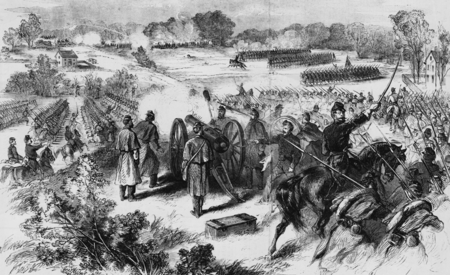Battle of Dranesville
1861 in Virginia1861 in the American Civil WarAC with 0 elementsBattles for McClellan's Operations in Northern Virginia of the American Civil WarBattles of the American Civil War in Virginia ... and 5 more
Battles of the Eastern Theater of the American Civil WarDecember 1861 eventsFairfax County in the American Civil WarLoudoun County in the American Civil WarUnion victories of the American Civil War

The Battle of Dranesville was a small battle during the American Civil War that took place between Confederate forces under Brigadier General J. E. B. Stuart and Union forces under Brigadier General Edward O. C. Ord on December 20, 1861, in Fairfax County, Virginia, as part of Major General George B. McClellan's operations in northern Virginia. The two forces on similar winter time patrols encountered and engaged one another in the crossroads village of Dranesville. The battle resulted in a Union victory.
Excerpt from the Wikipedia article Battle of Dranesville (License: CC BY-SA 3.0, Authors, Images).Battle of Dranesville
Frontage Road,
Geographical coordinates (GPS) Address Nearby Places Show on map
Geographical coordinates (GPS)
| Latitude | Longitude |
|---|---|
| N 38.995472222222 ° | E -77.337194444444 ° |
Address
Frontage Road
Frontage Road
20194
Virginia, United States
Open on Google Maps








